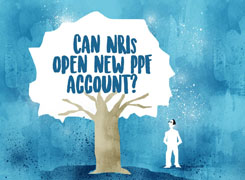33-year-old with 2L income, 1Cr loan, and a family: How can I save for retirement?
Ramalingam Kalirajan |10925 Answers |Ask -Follow
Mutual Funds, Financial Planning Expert - Answered on Jan 31, 2025
He has an MBA in finance from the University of Madras and is a certified financial planner.
He is the director and chief financial planner at Holistic Investment, a Chennai-based firm that offers financial planning and wealth management advice.... more

Hello sir, i am 33 year old single earning with dependent family of 4. My earnings are 2L per month with 0 savings as i boight i home in tier 1 city. I have a loan of 1cr. I am not able to understand how to manage the amount and pay the loans faster. I need to start savings as well.. but i pay 1.5L as EMIs which includes homeloan and personal loan. Could you help me decide on a planning strategy to save for retirement at the age of 50
Understanding Your Current Situation
You earn Rs. 2 lakh per month.
You pay Rs. 1.5 lakh in EMIs.
You have no savings at the moment.
You have a Rs. 1 crore loan.
You support a family of four.
Key Challenges You Face
Your EMI takes up 75% of your income.
You have little room for savings.
You need to clear your loans faster.
You want to retire by 50.
You need to secure your family’s future.
Step 1: Create a Strict Budget
Identify essential and non-essential expenses.
Cut all unnecessary spending.
Limit lifestyle expenses for a few years.
Reduce luxury spending like vacations and gadgets.
Step 2: Build an Emergency Fund
Start with a small goal of Rs. 1 lakh.
Save Rs. 10,000 monthly for this.
Use a liquid investment option.
This protects you from sudden expenses.
Step 3: Tackle Your Loans Smartly
Prioritise repaying high-interest personal loans first.
If possible, restructure loans to lower interest rates.
Avoid taking new loans for lifestyle needs.
Consider making lump sum prepayments when possible.
Step 4: Start Saving and Investing
Begin with Rs. 5,000 per month in long-term investments.
Increase your savings gradually as income grows.
Choose growth-focused investments to build wealth.
Actively managed funds are better than index funds.
Step 5: Secure Your Family’s Future
Get adequate health insurance for all dependents.
Ensure you have term life insurance.
This prevents financial stress in emergencies.
Step 6: Plan for Early Retirement
You have 17 years to build wealth.
Your goal should be to create a steady income stream.
Invest in assets that generate long-term returns.
Your savings rate must increase over time.
Step 7: Increase Your Income
Look for career growth opportunities.
Upskill to improve your earning potential.
Consider secondary income sources.
Even Rs. 10,000 extra per month can help.
Step 8: Monitor and Adjust Regularly
Review your financial plan every 6 months.
Adjust savings and expenses as required.
Stay disciplined with your financial goals.
Finally
Your current situation is tight but can improve.
Small changes will create long-term financial stability.
Stay consistent with loan repayments and savings.
Early retirement is possible with disciplined planning.
Best Regards,
K. Ramalingam, MBA, CFP
Chief Financial Planner
www.holisticinvestment.in
https://www.youtube.com/@HolisticInvestment
You may like to see similar questions and answers below
Ramalingam Kalirajan |10925 Answers |Ask -Follow
Mutual Funds, Financial Planning Expert - Answered on Jun 11, 2024
Ramalingam Kalirajan |10925 Answers |Ask -Follow
Mutual Funds, Financial Planning Expert - Answered on Feb 03, 2025
Ramalingam Kalirajan |10925 Answers |Ask -Follow
Mutual Funds, Financial Planning Expert - Answered on Jul 04, 2025
Ramalingam Kalirajan |10925 Answers |Ask -Follow
Mutual Funds, Financial Planning Expert - Answered on Aug 02, 2025
Reetika Sharma |459 Answers |Ask -Follow
Financial Planner, MF and Insurance Expert - Answered on Sep 25, 2025
Reetika Sharma |459 Answers |Ask -Follow
Financial Planner, MF and Insurance Expert - Answered on Dec 24, 2025
Reetika Sharma |459 Answers |Ask -Follow
Financial Planner, MF and Insurance Expert - Answered on Dec 24, 2025
Reetika Sharma |459 Answers |Ask -Follow
Financial Planner, MF and Insurance Expert - Answered on Dec 24, 2025
Reetika Sharma |459 Answers |Ask -Follow
Financial Planner, MF and Insurance Expert - Answered on Dec 24, 2025
Reetika Sharma |459 Answers |Ask -Follow
Financial Planner, MF and Insurance Expert - Answered on Dec 24, 2025
Reetika Sharma |459 Answers |Ask -Follow
Financial Planner, MF and Insurance Expert - Answered on Dec 24, 2025
Reetika Sharma |459 Answers |Ask -Follow
Financial Planner, MF and Insurance Expert - Answered on Dec 24, 2025
Reetika Sharma |459 Answers |Ask -Follow
Financial Planner, MF and Insurance Expert - Answered on Dec 24, 2025
Reetika Sharma |459 Answers |Ask -Follow
Financial Planner, MF and Insurance Expert - Answered on Dec 24, 2025
Reetika Sharma |459 Answers |Ask -Follow
Financial Planner, MF and Insurance Expert - Answered on Dec 24, 2025












.jpg)








